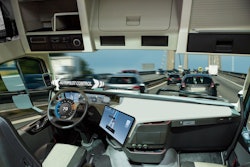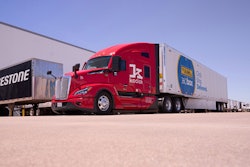Trucking news and briefs for Monday, Sept. 2, 2024:
California driverless truck ban again heads to Newsom’s desk
For the second year in a row, lawmakers in California have successfully passed legislation that would ban driverless autonomous trucks from operating in the state.
Last year’s attempt, of course, was vetoed by Gov. Gavin Newsom. The legislation will once again make its way to his desk for a signature, but it’s unclear whether he has changed his stance in the last 12 months.
The Autonomous Vehicle Industry Association is pushing for a repeat of last year, urging Newsom to once again veto the legislation.
“AB 2286 takes California backward when it needs to move forward,” AVIA CEO Jeff Farrah said. “AVIA stands with over 50 organizations, including California disability advocates, community groups, and companies in stark opposition to AB 2286, a bill to ban autonomous trucks. Last year, Gov. Newsom wisely vetoed the same legislation and called it ‘unnecessary.’ Nothing has changed, and we encourage him to veto the bill again so safety experts in his administration can continue to evaluate and regulate the AV trucking industry and bring the many benefits of this home-grown technology to Californians.”
[Related: J.B. Hunt completes 50K autonomous miles with Kodiak, Bridgestone partnership]
Farrah added that the bill “would undermine California’s regulatory process by thwarting safety regulators at the California DMV and California Highway Patrol, and bar Californians from accessing the supply chain and safety benefits autonomous trucks will deliver. It’s time to take the politics out of AV safety.”
The bill, AB 2286, would prohibit the operation of an autonomous vehicle with a gross vehicle weight of 10,001 pounds or more on public roads for testing purposes, transporting goods, or transporting passengers without a human safety operator physically present in the autonomous vehicle at the time of operation.
The legislation also includes reporting requirements for autonomous truck manufacturers, who would be required to report to the California Department of Motor Vehicles any collision that occurred on a public road with one of its autonomous trucks that resulted in damage of property, bodily injury, or death within 10 days of the collision. Manufacturers would also have to annually submit specified information regarding the deactivation of the autonomous mode for its trucks.
The bill would also require the California DMV, by Jan. 1, 2030, or five years after commencement of testing, whichever occurs later, to submit a report to the state legislature evaluating the performance of autonomous truck technology and its impact on public safety and employment in the transportation sector.
[Related: California advances new driverless tech regulations]
Michigan police sending safety alerts to ELDs
The Michigan State Police (MSP) Commercial Vehicle Enforcement Division (CVED) announced this week it is extending the reach of its safety and enforcement messaging directly to truck drivers by sending important safety messages to their ELDs.
Using the Smart Roadways service developed by Drivewyze, MSP motor carrier officers will be able to send safety alerts regarding roadway hazards or enforcement operations direct to commercial drivers to allow them time to slow down or otherwise prepare for what may lie ahead.
The short messages, no more than 25 characters in length, which can be geo-targeted to a specific area, appear in large letters on a bright yellow background on the driver’s dash-mounted ELD. Michigan is one of several states to use the service, MSP said.
“Safer commercial drivers make for safer roadways for all roadway users,” said MC Inspector Patrick Morris of MSP/CVED. “Coupled with continued education and enforcement, digital messaging direct to commercial drivers is another way our motor carrier officers are working to increase traffic safety and reduce traffic crashes and injuries on Michigan roads.”













